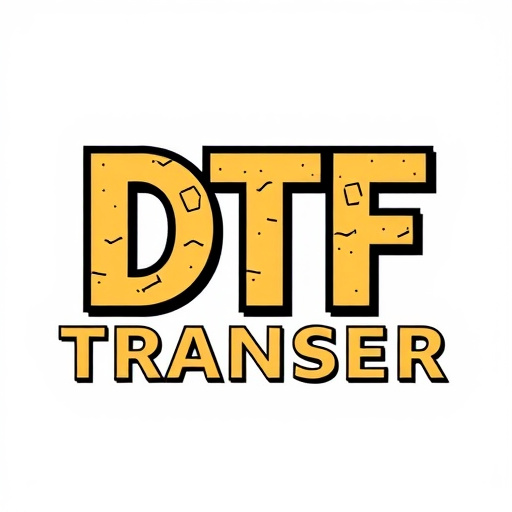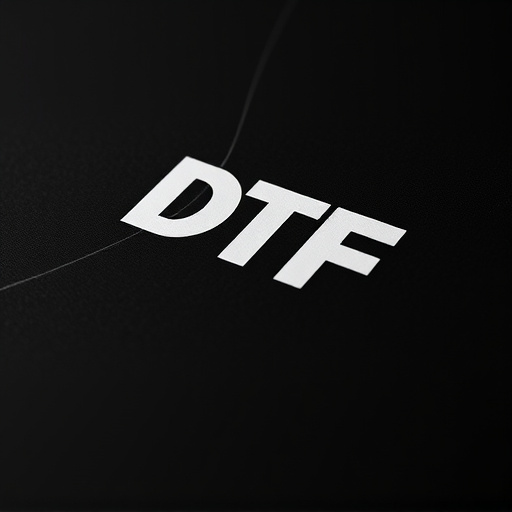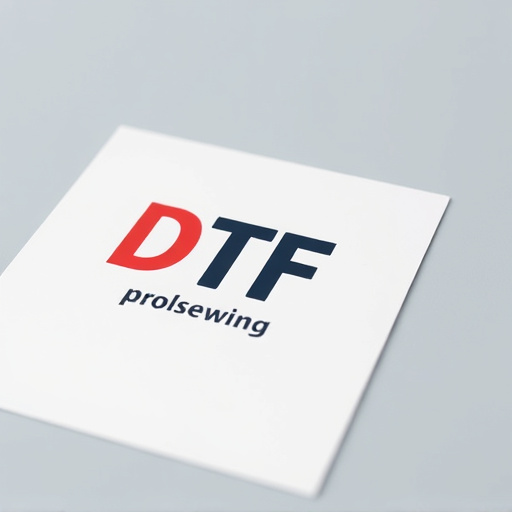Direct-to-fabric (DTF) printing is a cutting-edge technique for applying ink or dye directly onto synthetic fabrics like polyester and nylon, resulting in vibrant colors and intricate designs. Key factors for successful DTF transfer include material compatibility, especially with smooth porous surfaces like cotton blends, and understanding the unique properties of fabrics such as polyester, nylon, and spandex. For multi-layered fabrics, compatibility among inks, adhesives, and underlying materials is crucial. Proper care instructions ensure the longevity of DTF prints, while best practices involving high-quality materials, precise printing techniques, and post-print treatments result in durable and professional-grade DTF transfers for a range of applications.
In today’s diverse textile landscape, understanding the compatibility of synthetic fabrics with digital heat transfer (DTF) printing is crucial for achieving optimal results. This comprehensive guide explores the intricacies of DTF transfer, highlighting its versatile applications and how it enhances fabric design. We delve into material compatibility, delving into common synthetic types, multi-layered fabrics, care instructions, and industry best practices to ensure successful DTF printing outcomes. Maximize your fabric potential with these insights on achieving vibrant, durable DTF prints.
- Understanding DTF Transfer and Its Applications
- Material Compatibility for Optimal DTF Printing
- Common Fabric Types and Their DTF Printability
- Considerations for Multi-Layered Fabrics
- Care and Maintenance of DTF Prints on Synthetic Fabrics
- Industry Best Practices for DTF Fabric Applications
Understanding DTF Transfer and Its Applications

Direct-to-fabric (DTF) transfer is a versatile printing technique that has revolutionized synthetic fabric applications. This process involves transferring ink or dye directly onto the fabric’s surface, enabling intricate designs and vibrant colors. DTF offers a wide range of applications, from customizing apparel to creating promotional items. It’s a game-changer for businesses and designers looking to produce unique, high-quality prints on synthetic fabrics like polyester and nylon.
DTF Printing allows for precise control over design placement and detail, making it suitable for both small and large-scale production runs. The technique ensures that prints remain durable and wash-resistant, a significant advantage for items intended for daily use or outdoor activities. By embracing DTF Transfer, manufacturers can achieve exceptional results, catering to diverse markets and trends while maintaining product quality and customer satisfaction.
Material Compatibility for Optimal DTF Printing

When it comes to DTF (Direct to Fabric) printing, material compatibility is a crucial aspect that ensures optimal results. For DTF transfers, the fabric’s surface must be suitable for receiving the design. Compatible materials allow the DTF ink to adhere properly, producing vibrant and long-lasting DTF prints. Different fabrics have unique characteristics, so understanding their compatibility with DTF is essential.
For instance, smooth, porous surfaces like cotton or poly-cotton blends are generally ideal for DTF Printing. These materials enable the ink to penetrate deeply, creating rich colors and fine details in the DTF transfer. On the other hand, rough or highly textured fabrics might not yield the best outcomes as they can prevent proper ink absorption, leading to potential smudging or inconsistent prints. Therefore, selecting the right fabric is a key step in achieving high-quality DTF transfers and ensuring customer satisfaction.
Common Fabric Types and Their DTF Printability

In the realm of synthetic fabric applications, understanding compatibility and printability is paramount for successful DTF (Direct to Fabric) transfer. Common fabric types, such as polyester, nylon, and spandex, each present unique characteristics that influence their suitability for DTF printing. Polyester fabrics, ubiquitous in apparel, offer excellent DTF printability due to their smooth surface and even texture, ensuring crisp and vibrant DTF prints. Nylon fabrics, known for their durability and resilience, also perform well, although slightly more preparation may be required to ensure a smooth transfer. Spandex fabrics, with their stretchiness, pose a unique challenge; specialized techniques and specific ink formulations are needed to achieve clear DTF transfers without distortion.
The adaptability of DTF printing extends beyond these common types, as innovative synthetic blends continue to emerge. However, printability can vary significantly across different fabric compositions, necessitating careful consideration of the material’s properties. Factors like porosity, absorbency, and surface finish play crucial roles in determining the quality of DTF transfer outcomes. By matching the right fabric with suitable printing methods, manufacturers can unlock the full potential of DTF technology, delivering exceptional DTF prints that enhance the final product’s aesthetic appeal and durability.
Considerations for Multi-Layered Fabrics

When it comes to synthetic fabric applications, especially multi-layered structures, understanding compatibility becomes paramount. Each layer serves a unique purpose, from enhancing comfort to imparting water-repellency or breathability. Therefore, selecting inks and adhesives suitable for DTF (Direct to Fabric) transfer or printing is crucial. In the case of DTF techniques like DTF Transfer and DTF Printing, ensuring that all components—from the fabric’s composition to the print medium—are compatible guarantees a durable finish.
Multi-layered fabrics pose specific challenges due to their intricate construction. The inks used must adhere not just to the top layer but also bond effectively with underlying materials, which can vary from non-woven fabrics to polyester or nylon. Moreover, factors like temperature, pressure, and curing time during the printing process require careful consideration to prevent damaging the fabric’s structure or compromising its performance. Proper preparation and testing of samples are essential steps to ensure that DTF prints on multi-layered fabrics turn out vibrant, long-lasting, and without any visible defects.
Care and Maintenance of DTF Prints on Synthetic Fabrics

When it comes to caring for and maintaining fabrics with DTF (Direct-to-Fabric) prints, a few key practices can ensure longevity and vibrancy of the design. Since DTF transfer uses heat to bond inks directly onto synthetic fibers, these materials require specific handling to prevent ink fading or smudging. Regular washing should be done by hand using mild detergent and cold water; machine washing can cause excessive agitation that may damage the print quality over time. Avoid using bleach, as it can weaken the ink bond and lead to color loss. Air drying is ideal to prevent potential warping of the fabric due to heat exposure from dryers.
For best results, ironing should be performed on the reverse side of the fabric with a low-heat setting to minimize damage to the print. Direct contact between the iron and printed surface should be avoided. Additionally, proper storage is crucial; keep DTF-printed fabrics in a cool, dry place, away from direct sunlight, to prevent color fading. These simple care instructions will help maintain the crispness and vibrancy of DTF prints on synthetic fabrics for many uses to come.
Industry Best Practices for DTF Fabric Applications

In the realm of synthetic fabric applications, Direct to Fabric (DTF) printing has emerged as a game-changer, offering vibrant and durable DTF transfer results. Industry best practices dictate a meticulous approach to ensure optimal DTF prints. The process begins with high-quality materials; using top-tier synthetic fabrics enhances print longevity and vibrancy. Pre-treatment of fabrics is crucial; this step prepares the surface for DTF printing, ensuring better adhesion of the design.
Experts recommend precise screen resolution and optimized print settings to achieve crisp DTF prints. Proper registration and alignment are vital during the printing process. Post-print treatments, such as heat pressing, further enhance the durability of DTF transfers. Remember that proper care and maintenance of printing equipment are essential for consistent and high-quality DTF results, ensuring each print meets professional standards.














